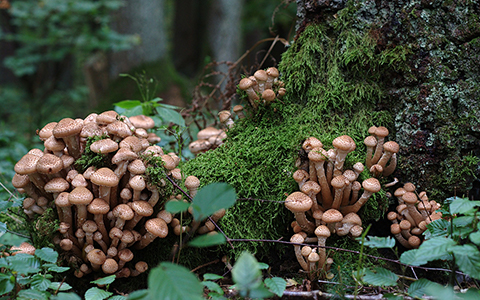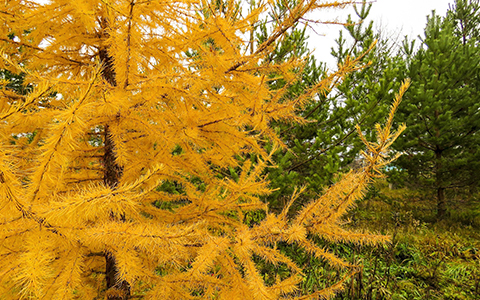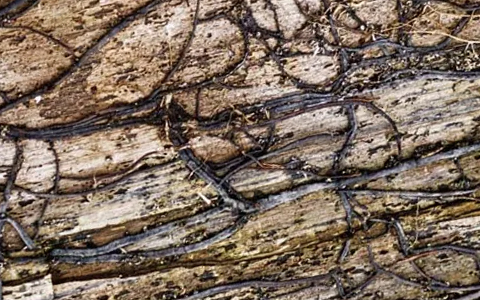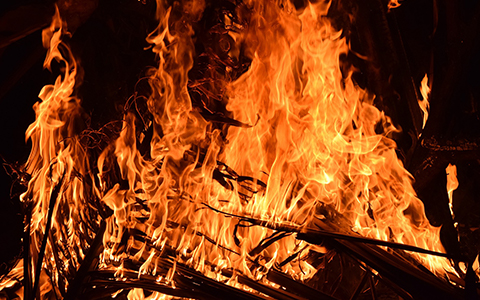Notice: Undefined variable: page in /home/vrxdg1855sn3/public_html/wp-content/themes/72tree/content.php on line 15
Notice: Trying to get property 'ID' of non-object in /home/vrxdg1855sn3/public_html/wp-content/themes/72tree/content.php on line 15
Armillaria Root Rot Identification, Treatment, and Prevention

Need help figuring out how to identify and stop root rot from killing your trees, shrubs, or plants? Your ability to quickly identify Armillaria root rot will help you take swift action to eradicate it from your landscape.
72tree.com gathered the following information about the causes, identification, treatment, and prevention of Armillaria root rot.
What is Armillaria Root Rot
Armillaria root rot is a severe tree and woody plant disease. Armillaria can also affect palms, succulents, ferns, and other herbaceous plants. This disease is caused by multiple fungi in the genus Armillaria, also known as shoestring root rot, oak root fungus, honey agaric, or honey fungus.
Note: Armillaria mycelia may live hundreds of years or die within months. Armillaria’s lifespan depends on an available food supply. As long as nourishment is accessible and temperature and moisture are suitable, an Armillaria mycelium network will produce new sporophores (mushrooms) each fruiting season (late summer and fall).
What Causes Armillaria Root Rot?
Armillaria root rot is caused by several species of Armillaria fungus. The disease can occur in many different evergreen and deciduous tree, shrub, and plant species. Armillaria can survive many years in wood debris like old stumps or root systems. New infections typically occur when healthy roots grow close to or graft (inosculate) with diseased roots.
Armillaria Infection Identification

Many known species of Armillaria exist in North America and are not easily distinguishable from one another. The most common and pathogenic species to trees (specifically conifers) are Armillaria mellea and Armillaria ostoyae.
Trees show symptoms and signs of Armillaria infection at different rates. Trees under stress, like during the summer heat or drought, are more likely to become infected and show rapid decline symptoms. Young trees may show symptoms and die within months or days compared to older trees, which may show symptoms for years before dying. Symptoms typically appear as the following:
• Dramatically reduced terminal growth
• Yellowing and browning of foliage
• Whitish resin around a tree’s base
• Creamy-white fans of fungus between bark and wood at the root flare
• Brown or black fungal rhizomes (resembling shoestrings) beneath the bark, on the roots, and in the soil
• Large groups of tan-colored mushrooms (honey mushrooms) near decaying wood in late summer and fall
• Sudden death of young trees (often in groups)
Note: An Armillaria-infected tree’s foliage typically wilts, turns yellow, and browns without falling from the tree.
How Does Armillaria Root Rot Spread?
Some species of Armillaria will produce mushrooms near (or on) infected tree roots or trunks. While new infections can result from airborne spores released by Armillaria mushrooms, the most common way this disease spreads is by underground rhizomorph growth originating from an infected tree, shrub, or plant.

Tip: Infected plants can spread this disease to shrubs and trees with roots in their vicinity (and vice-versa).
Can Armillaria be Treated?
No. Once a host is infected, there is no effective treatment (cure) for Armillaria root rot. The disease can be managed (somewhat) by consistently removing dead trees, shrubs, plants, infected stumps, and entire root systems. Armillaria requires consistent moisture to survive. In large stands or groves, excavation around the root crown can be an effective deterrent but not a cure.
Can a Tree Recover from Root Rot?
Slowing Armillaria root rot in plants, shrubs, and trees is possible by removing affected roots and dead wood if the foliage is in the early stages of root rot or if the decay isn’t widespread. Unfortunately, because digging up larger trees to access decayed or dead roots is virtually impossible, slowing root rot in established trees is very difficult.
There are no chemical controls for honey fungus at present. The only viable option is to dig out the affected plant, shrub, or tree complete with all its roots and burn it.
Which Fungicide is Best for Root Rot Prevention?
Apply any of the most effective fungicides (those with thiophanate-methyl, polyoxin-D, triflumizole, or fludioxonil) preventively to uninfected soil. Once a plant, shrub, or tree is infected with Armillaria root rot, the fungi’s mycelia also contaminate the surrounding soil and are highly resistant to fungicides and other chemical treatments.
Armillaria Root Rot Elimination

The only absolute method to eliminate Armillaria root rot is the complete removal and incineration of infected plants, shrubs, and trees, including their foliage, trunks, stems, and roots.
Eliminating this fungus in contaminated soil requires extended desiccation and exposure to sunlight.
Note: If planting in previously exposed soil, select Armillaria-resistant species. Armillaria-resistant tree species include the following:
• Ginkgo (Ginkgo biloba)
• Tulip tree (Liriodendron tulipifera)
• Ash (Fraxinus)
• Cypress (Cupressus)
• Cherry (Prunus avium)
• Crabapple (Malus)
• Eucalyptus (Eucalyptus globulus)
• Holly (Ilex)
• Leyland cypress (Cuprocyparis leylandii)
• Maple (Acer)
• Sweetgum (Liquidambar)
Tip: Hire a certified arborist to help you completely remove infected plants, shrubs, and trees, sterilize contaminated soil, and plant new, resistant species in their place. Find an ISA-certified arborist (or verify one’s credentials) by visiting treesaregood.org/findanarborist.
Armillaria Root Rot
In this article, you discovered crucial information about Armillaria root rot and how to eliminate it from your property.
Knowing how to identify and deal with Armillaria root rot will help you remove and destroy infected specimens and preserve unaffected trees, shrubs, and plants.
Failure to quickly identify and prevent Armillaria root rot from spreading across your property will result in tree, shrub, and plant death, leaving your soil virtually useless.
Sources:
fs.usda.gov/Internet/FSE_DOCUMENTS/stelprdb5187208.pdf
ipm.ucanr.edu/PMG/PESTNOTES/pn74171.html
extension.umn.edu/plant-diseases/armillaria-root-rot
extension.psu.edu/armillaria-root-rot
extension.unh.edu/blog/2022/02/inosculation-making-connections-woods
